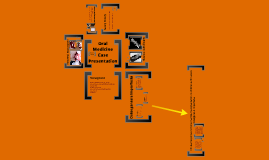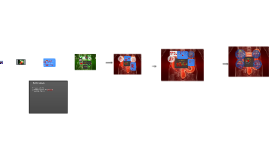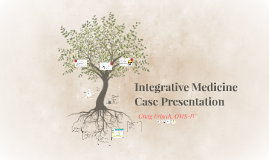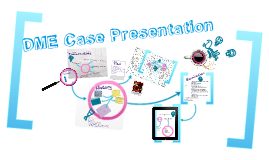Integrative Medicine Case Presentation
Transcript: NutriEval Beaumont Labs Fermenatble Oligosaccharides, Disaccharides, Monosaccharides, and Polyols "65y.o. female is in for a follow up for digestion. She has lost weight and feels wonderful Ben, her son, has had anxiety and it has been better, so her her stress is better. This is the first time that her gut has been balanced in her life.Overall she feels good." Plan: Go to PCP for HRT Continue to increase Yoga or other forms of exercise- In the future we will assess mercury level if sleep is not 100% and you are not feeling 100% Follow up in 4-6 months for the Nutra Eval and we can go over results Fatigue Medications: Align brand probiotic Calm brand magnesium supplement Citrucel fiber supplement Sleep: Hx of Sleep apnea initiates sleep, but difficulty with maintenance. wakes often. reports palpitations, joint pains. Diet: All Organic, all home-made, includes ample spinach and berries, supplements with protein powder Our Patient Differential for GI Bleed/Abdominal Pain Colon Cancer Diverticulitis Ischemic Bowel Inflammatory Bowel Crohn's Colitis Dysbiosis Food Allergy Hemorrhoids, Anal Fissure Synthesized in sunlight and available in few foods common deficiency Decreased with Statins, NSAIDs Joint Pain Vitamin D GI Upset, Constipation Updates: Family History Mother: OA, HTN, CAD, Schizophrenia Father: OA, HTN, ETOH abuse, DM2, CAD s/p PCI & CABG. Sister: RA Sister: Glaucoma Brother: OA No known family Hx of Colon, Prostate, ovarian, or breast Cancer. DLD, CVA, enhances absorption of Calcium, Iron, Magnesium, Phosphate, Zinc Hormonal Properties in calcium homeostasis and metabolism Antioxidant Supports Mood Beaumont Labs Follow Up on Labs Visit 4 PTH: 35 pg/mL [9-69] Calcium: 9.5 [8.5-10.5] We begin with lifestyle and dietary modification (eg, exclusion of gas-producing foods; a diet low in fermentable oligo-, di-, and monosaccharides and polyols [FODMAPs]; and in select cases, lactose and gluten avoidance) Integrative Medicine Case Presentation moving, son w/ rehab, relationship w/ husband strained Vitamin D Deficiency Sleep having palpitations laying supine sleep study showed central sleep apnea C-pap does not work Still waking through the night Digestive System improved greatly "better than it has ever been her entire life" Stress much better, has decided to sell house and move to a much smaller house Elimination Diet Eliminate Dairy, Gluten, Sugar 1 month, add each independently 3 days apart Labs NutraEval CBC, CMP Relaxation Work on Letting go of control Couples retreat exercise 3x/week Supplements Adren-All 2 QAM Adren-Vive2 QPM Follow up on Sleep, inflammation, blood work, digestion, diet, supplements, afternoon fatigue Plan: Non-Celiac Gluten Sensitivity Participants were randomly assigned to groups given a 2-week diet of reduced FODMAPs, and were then placed on high-gluten (16 g gluten/d), low-gluten (2 g gluten/d and 14 g whey protein/d), or control (16 g whey protein/d) diets for 1 week 66 y/o Female with PMH AVNRT s/p ablation 2001, sleep apnea, presents with complaint of rectal bleed, joint pain, fatigue, stress, sleep problems. She reports constipation relieved with Miralax, worsening with stress. Denies bloating or flatulence. Hx benign colon polyps. Last scoped 2009 Reports episodes of abdominal pain and bleeding, 3-4x/yr, pain relieved with defecation. Pt concerned about ischemic bowel disease. FODMAPS Visit 3 OA,HTN,DM2, CAD, Galactosemia UpToDate Visit 2 Craig Erbach, OMS-IV Dairy: got constipated No issue with gluten Sugar makes inflammation worse Energy: better after lunch feeling better overall Evidence in Mouse Models Gut-Brain Connection Ectopic Pregnancy Lifestyle Anger and Emotion management consider returning to work consider having fillings removed Increase weight bearing exercise Supplements 5000 IU Vitamin D3 Osteoben TID AdrenAll2 QAM Adrenvivie2 QPM Probiotic to Lactoprime QD Multi: with high B content with trace minerals Metabolic Synergy TID INcrease Magnesium to 2 tsp per day sleep disturbance, apnea Plan: Summary

















